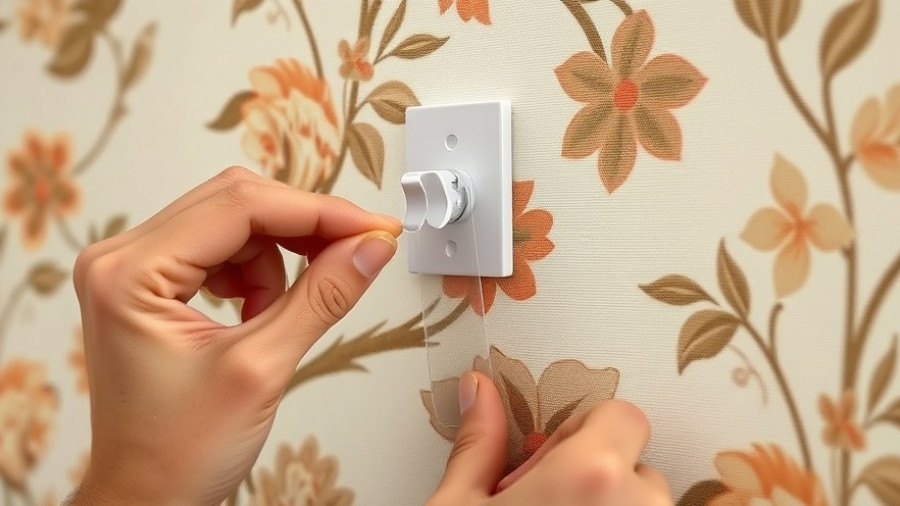
Understanding Temporary Hooks: Your Best Allies for Decoration
In today's world of DIY home decor, the rise of temporary hooks has empowered renters and homeowners alike to adorn their walls without the hassle of nails and screws. Whether you're gearing up for the festive season or just looking to personalize your living space, these small devices bring convenience. However, as convenient as they are, improper use can lead to unexpected wall damage, something no one wants to deal with during inspections, especially if you're a renter.
Types of Temporary Hooks and Their Uses
Temporary hooks come in various forms, including adhesive, suction, and magnetic hooks. Each type has its strengths:
- Adhesive Hooks: These utilize pressure-sensitive adhesives ideal for smooth, non-porous surfaces like painted drywall and glass.
- Suction Hooks: Best suited for mirrors and tiles, suction hooks create a vacuum seal but can slip if overloaded.
- Magnetic Hooks: Sticking to ferrous surfaces, these hooks can sometimes cause scratches upon removal.
Home experts recommend closely monitoring usage to minimize any potential damage to your walls, particularly with adhesive hooks on textured or recently painted surfaces.
How to Prevent Temporary Hook Damage
Julian Thomas, a lifestyle expert, emphasizes the first step to preventing wall damage is preparing the surface adequately. Washing the area where the hook will be applied with rubbing alcohol can significantly enhance adhesion and reduce the risk of residue post-removal. Testing on a small, inconspicuous area first is another smart strategy.
For adhesive hooks specifically, avoiding use on textured walls or those painted less than a week ago is crucial. As Eric Kotlyar, a home renovations expert, advises, 'Much of the damage arises from pulling them off incorrectly, which can peel paint or tear drywall paper.' To remove an adhesive hook successfully, pulling straight down (not away from the wall) while stretching the adhesive is key.
Alternative Strategies for Wall Decor
If concerns about wall damage still linger, consider engaging with innovative options. Besides utilizing temporary hooks, various methods exist for hanging decor creatively without surface damage. Techniques such as using washi tape, command strips, putty, and built-in furniture can ensure walls stay pristine while still flaunting your personality. Using items such as pegboards or cork boards can create a dynamic display without needing to adhere anything directly to the wall.
Plan for the Future
As renters and homeowners navigate the balance between personal expression and property care, becoming familiar with proper decor attachment techniques is invaluable. Not only does this knowledge protect your walls, but it also safeguards your security deposit. By preparing surfaces appropriately, adhering to weight limits, and employing the correct removal techniques, you can enjoy a beautifully adorned space while keeping costs minimal.
Conclusion: Take Charge of Your Home Decor
Now that you have insights on how to use temporary hooks effectively without risking damage to your walls, it's time to get out that holiday decor or art piece that's been waiting for a home! If you'd like to learn more about making your living space reflect your unique style, keep exploring exciting DIY tips and tricks. Take proactive steps toward decorating your home thoughtfully and beautifully!
 Add Row
Add Row  Add
Add 




Write A Comment